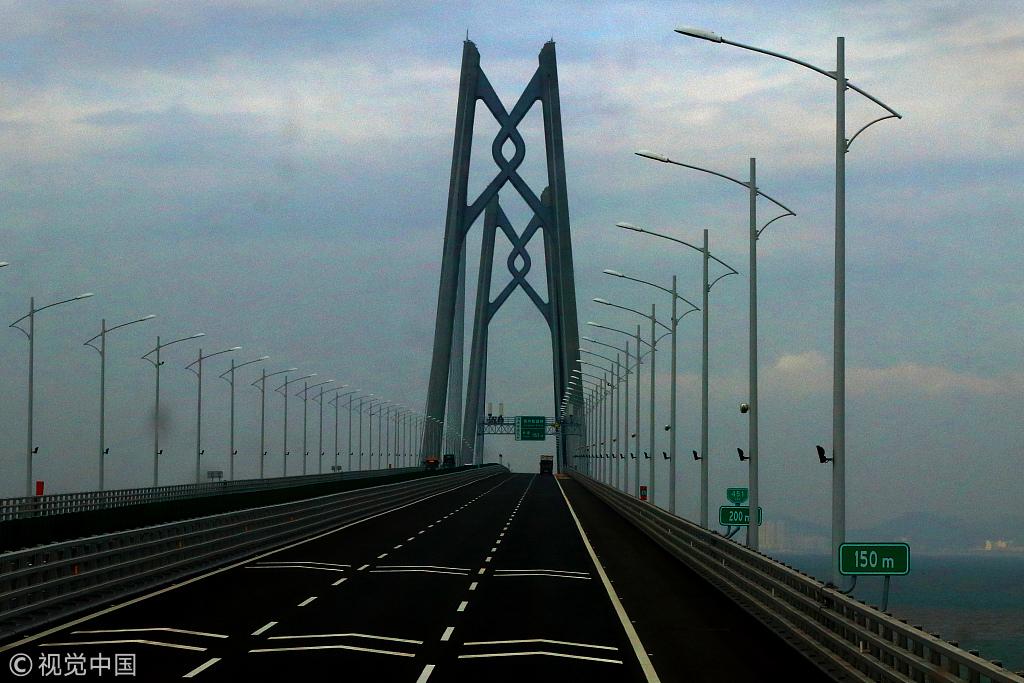
Opinion
18:29, 23-Feb-2019
China refuses the label of 'state capitalism'
Ken Moak

Editor's note: Ken Moak, who taught economic theory, public policy and globalization at the university level for 33 years, co-authored a book titled "China's Economic Rise and Its Global Impact" in 2015. The article reflects the author's opinion, and not necessarily the views of CGTN.
Neither the Soviet central planning Five-Year Plan (FYP) nor Western liberal capitalism was deemed practical for China. For example, China's first FYP was a mirror image of the Soviet Union's, establishing an industrial foundation, but did not produce enough food to feed the largely agrarian population. The mixed result was the difference in history and institutions between the two countries.
Liberal capitalism was fraught with flaws and contradictions, creating wide fluctuating business cycles or resulting in periods of high unemployment or inflation. It also contributed to economic and social injustice, a major reason why Mao Zedong's Communists mounted and won the civil war against the Nationalists.
The search for an appropriate development model led to Deng Xiaoping's theory of "socialism with Chinese characteristics," and its success in transforming the Chinese economy and society is beyond doubt, turning the country into the world's second largest economy, lifting over 700 million people out of poverty, just to name a couple of accomplishments.
However, the West has refused to accept such a concept, instead, labeling the Chinese economy as “state capitalism.” From the Chinese point of view, such labeling is a blatant attempt to discredit the country's just pursuit for socialism. It also stems from Westerners' dislike of the significant role the government plays in the Chinese economy. However, it is important to recognize that even in the history of Western countries, the state has exercised various degrees of intervention and control in the economy. Forcing the label of “state capitalism” on China does not match the reality on the ground and fails to capture many other unique economic traits.
Developing socialism with Chinese characteristics
China's economic growth may not be perfect and there were mistakes made in history, just like any other country. Depending on exports and investment as the engine of economic growth produced quantitative growth, but the policy proved unsustainable, wasting scarce resources, overproduction, worsening pollution, increasing rampant corruption and widening the rich-poor gap.

A man holds the hand of a boy as they walk toward a poster of Chinese former leader Deng Xiaoping in Shenzhen in southern China's Guangdong province, November 8, 2018. /VCG Photo
A man holds the hand of a boy as they walk toward a poster of Chinese former leader Deng Xiaoping in Shenzhen in southern China's Guangdong province, November 8, 2018. /VCG Photo
However, the government was quick to recognize the flaws of the export/investment-led platform, prompting then Premier Wen Jiabo to label it as unstable, unbalanced, uncoordinated and unsustainable. The government then quickly rebalanced and restructured the economy, assigning domestic demand as the driver of economic growth and replacing labor-intensive manufacturing with value-added production.
The development policy shift made sense in light of China's increasingly affluent population with relatively low personal debts and high savings. At that time, private consumption was less than 35 percent, with considerable room for expansion. Further, consumption can act as a "built-in stabilizer" because people need to buy basic necessities such as food.
Leadership resiliency in changing policies is one reason for China's "economic miracle." Other reasons behind China's economic success include pragmatism, experimentalism, gradualism, and propensity for long-term planning. A strong central government with the authority and resources to implement effective and timely policies helped.
Pragmatism
Deng Xiaoping demonstrated pragmatism when he set aside history and reached out to former adversaries, the U.S. and Japan. In doing so, China was able to access advanced technology and management methods.
Pragmatism is deeply entrenched in the policy area in that successive generations of leaders pursued economically-sound policies over those that were ideologically oriented. Jiang Zemin and Zhu Rongji took steps to reform SOEs, promoted private enterprise and encouraged foreign investment. They seem to understand that competition would enhance the efficient use of resources.
The tradition continues, as demonstrated by the current leadership's ability to separate economics from ideology. For example, China continues to try to forge closer relations with the U.S., even though it is stepping up the anti-China rhetoric, accusing China of stealing technology and other misdeeds.
Experimentalism
The U.S. journalist Joshua Cooper Ramo (who dubbed the Chinese model the "Beijing Consensus") argued that the economy's successful was due in part to the leaders' willingness in experimenting with new ideas. Shortly after the Cultural Revolution, the leadership approved the "household responsibility system" of allowing individual farmers to lease land from communes to grow and sell whatever produce they wanted after paying the state quota.
The experiment succeeded beyond expectation, lifting millions of farmers out of poverty, creating a rural economic boom and leading to the establishment of private enterprises in urban centers. Offering rewards in accordance with efforts brought out the hard work ethic and entrepreneurial spirit of the Chinese people.
Gradualism
Deng Xiaoping and Chen Yun understood the perils of transforming a central planning economy to a market-driven one, cautioning "groping every stone when crossing the river" to avoid irreparable economic damage. The gradualist approach was demonstrated when the government invited domestic and foreign experts on a two-week Yangtze River cruise to thoroughly examine the pros and cons of the price subsidy policy on strategic goods such as food but allow the market to determine "non-strategic" ones (e.g., clothing) prior to its implementation.
That gradualist approach probably strengthened the policy's effectiveness and contributed to economic and social stability because it afforded the population to access food, energy, transportation and other necessary goods and services. Allowing market forces to determine the prices of "non-strategic goods" contributed to the sectors' efficiency and growth.

The Hong Kong-Zhuhai-Macao Bridge. /VCG Photo.
The Hong Kong-Zhuhai-Macao Bridge. /VCG Photo.
Long-term planning
The success of China's model also lies in its leaders' propensity for long-term planning. Its Five-Year Plans (FYP) model became the country's economic development roadmap, setting targets and guidelines on how the goals were to be achieved once every five years. For the most part, the targets and guidelines were a continuation of those instituted in preceding plans, meant to either further success or correct mistakes. For example, the 11th FYP (2006 – 2010) detected the mistake of over reliance on investment and export as the engine of growth. The government shifted gear in the 12th FYP (2011 – 2015), rebalancing and restructuring the economy, respectively, to being consumption-driven and focusing on innovative growth.
One of the long-term plans was the Belt and Road Initiative (BRI) which the government established in 2013, reviving the ancient Silk Road trade route with Europe via Central and South Asia, Africa and the Middle East. Its success is not in doubt in light of the huge two-way trade between China and the over 80 participating countries of over 5 trillion U.S. dollars since the BRI's conception.
China implemented the "Made in China 2025" in 2015, a 10-year innovation-focused industrial policy meant to make the country a technological hub. The policy has been helpful in turning China into an innovation hub, narrowing the technology gap and in some cases even surpassing the U.S. Huawei's 5G technology, for example, are far more advanced than that of the West and South Korea.
Long term planning is therefore deeply entrenched in the country's development architecture. The latest is the Greater Bay Area Plan (GBAP) involving nine cites in Guangdong province, Hong Kong and Macau to boost economic growth and technology advancement. While critics are skeptical of its success, China might prove them wrong once again because the GBPA intends to exploit the comparative advantages of the major hubs. Guangdong, Shenzhen, Hong Kong and Macau are designated respectively as the manufacturing, innovation, financial services and tourism hubs.
Critics are wrong about China's development model because of their over-simplistic assumptions and lack of understanding of China. They wrongly assumed that spending on infrastructure was a waste of money and worsening the country's indebtedness when in fact it was responsible for attracting investment.
Indeed, one can argue that it is China's pragmatic and unique economic model that made the country what it is today.
(If you want to contribute and have specific expertise, please contact us at opinions@cgtn.com)

SITEMAP
Copyright © 2018 CGTN. Beijing ICP prepared NO.16065310-3
Copyright © 2018 CGTN. Beijing ICP prepared NO.16065310-3